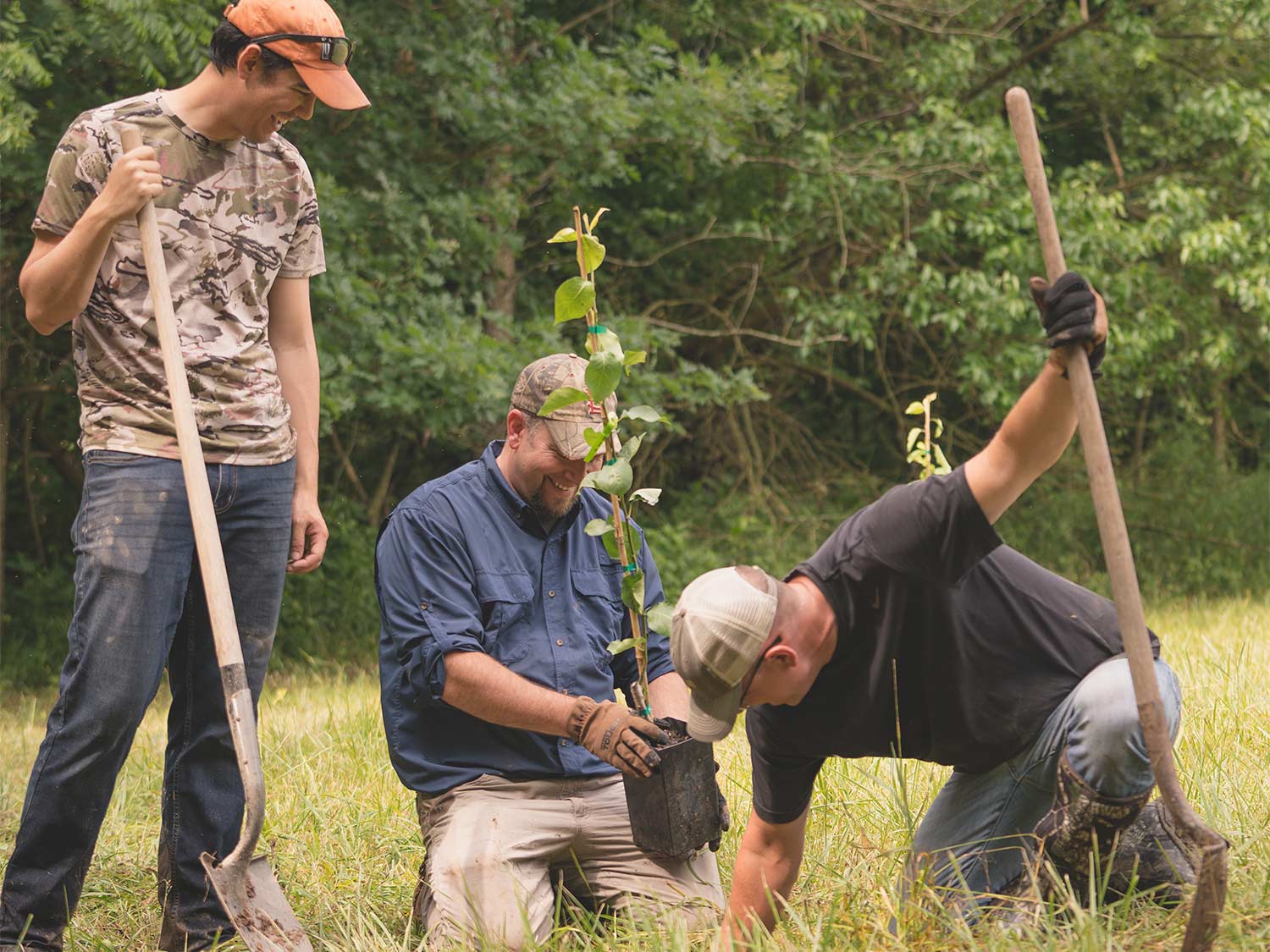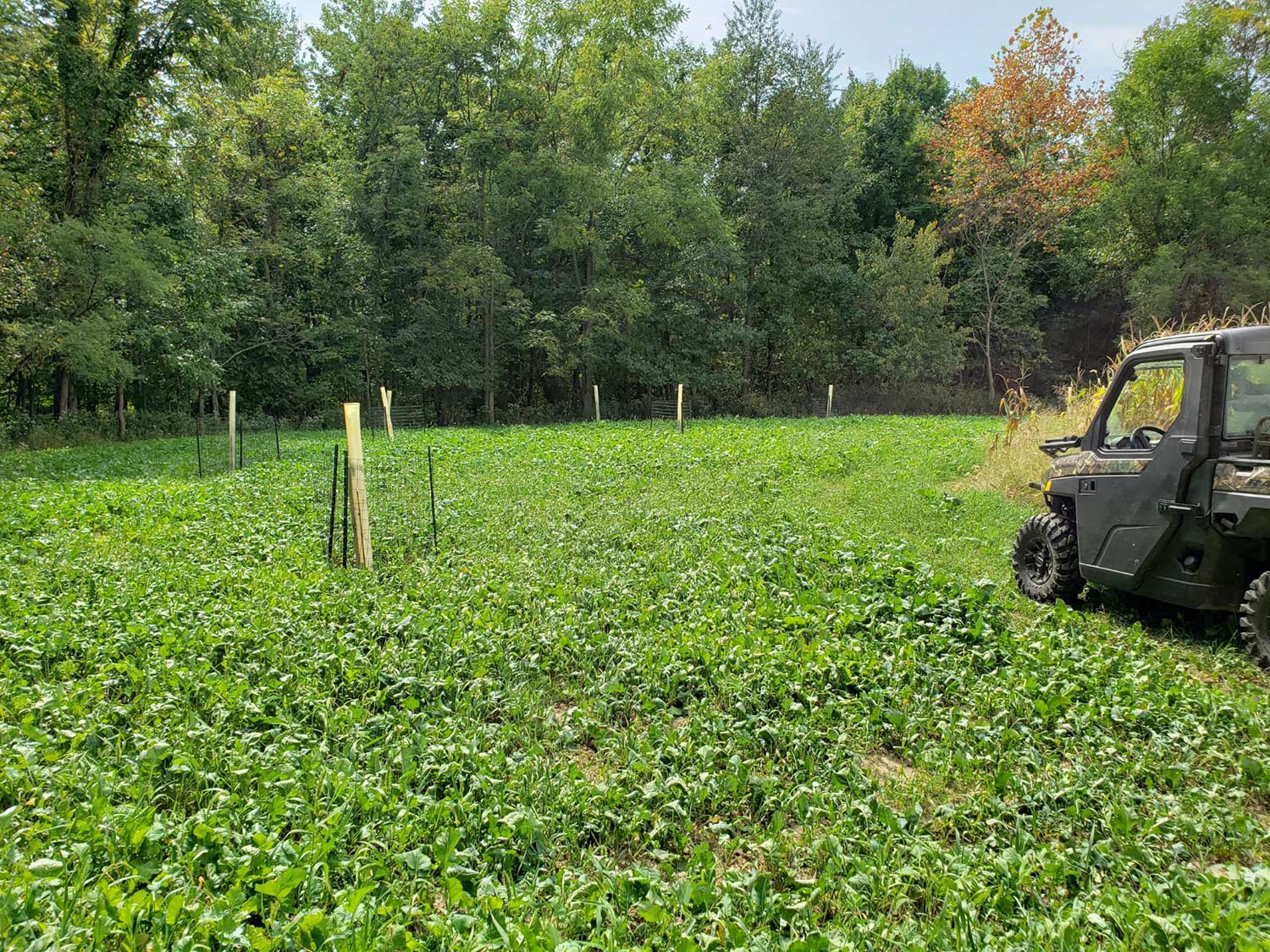
Editor’s Note: This is part 7 of a 9-part Respect the Game series on habitat improvement, whitetail management, and the tradition of deer hunting. We’ve partnered with Polaris to tell the story of the world-record buck, and the group of buddies who worked together to hunt the deer last fall. Stay tuned for more tips, stories, and videos from this series.
Food plots are all the rage for deer-focused land managers, and have been for a while. This makes sense: Deer, like just about every other critter on the planet, need to eat to survive. Giving them something nutritious to eat in an area that’s advantageous for hunting is a good plan. Except for a few minor issues: Food plots can be a major pain in the butt, they require extensive annual maintenance, and they provide minimal lasting cover for wildlife.
To be clear, we’re still fans of food plots, even with their downsides. But if you’re looking for a way to 1) provide deer with a preferred food source while 2) enhancing the long-term value of your property and 3) saving yourself hours of labor each year, you might consider planting a deer orchard.
Young trees—and the related supplies—may seem costly up front, but they have almost no long-term maintenance cost. I recommend loading up your UTV with all the essentials you’ll need for a day of planting (trees, tree tubes, stakes, tie wire, water, shovel, etc.) and knocking out your planting in one go. Make sure to protect your investment with tree tubes and fencing to ensure deer and other critters don’t destroy the saplings before they become established.
Plant these trees (and one shrub) alongside your established food plot program or, if you’re feeling really rebellious, instead of food plots altogether.
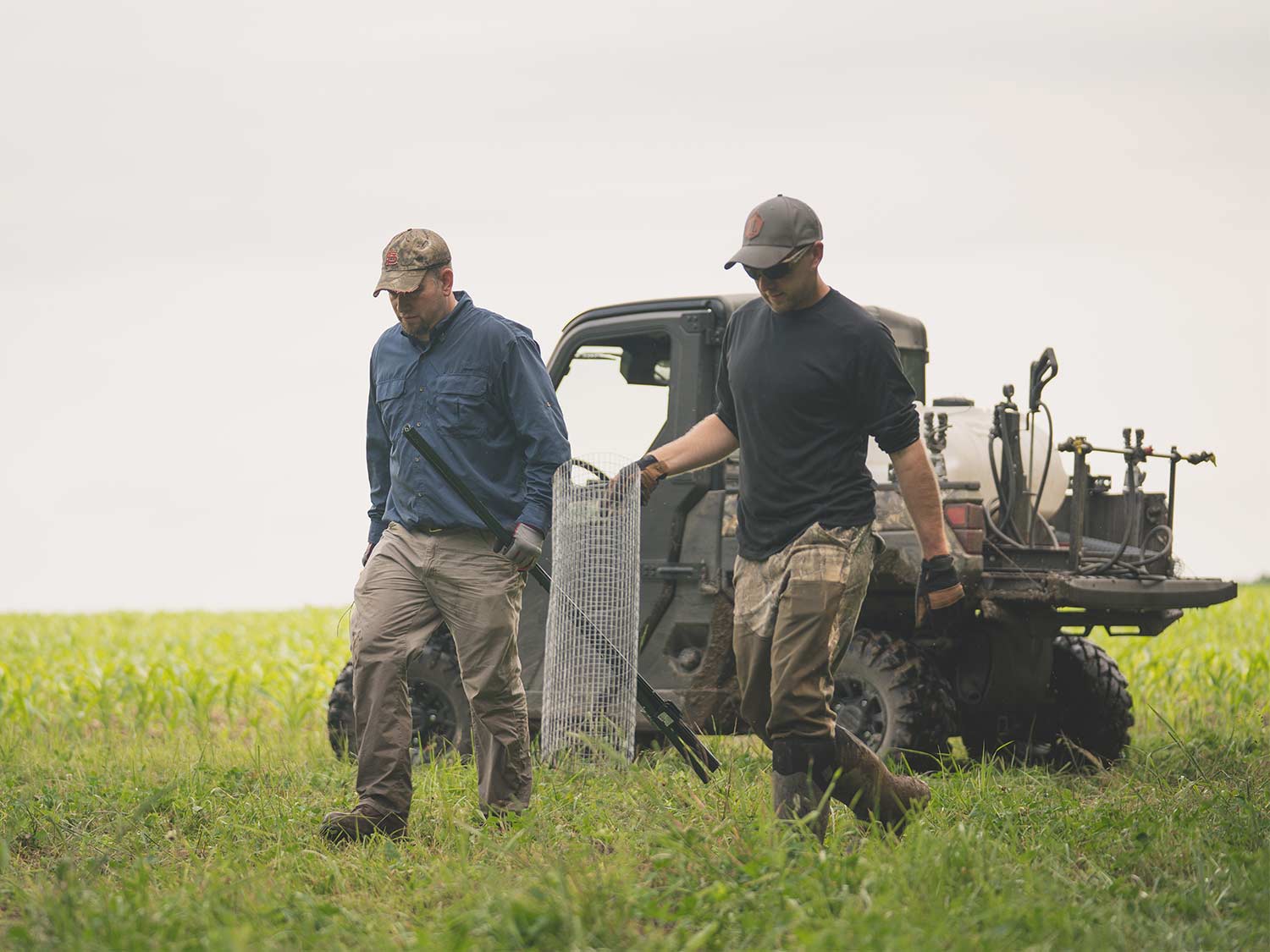
1. Dunstan Chestnut
The story of the American chestnut tree is a sad one. In the 1800s, the magnificent chestnut was the dominant hardwood in what would become the eastern United States. It was revered for its timber value, was used heavily in the tanning trade, and was one of the most important species for wildlife (and people) as a food source. In the early 1900s, however, an invasive bark fungus wiped out nearly every last American chestnut.
Today, we can again plant chestnuts thanks to varieties that are cross-pollinated with Chinese chestnut strains that are resistant to the blight. Chestnut Hills Outdoors is one of the top producers of the Dunstan Chestnut, and deer absolutely love the large chestnuts these trees produce. Once they reach a nut-bearing age, they’ll produce a heavy crop each fall.
2. Pear
The pear tree lacks the notoriety and universal appeal of the apple tree in the deer woods. And that’s a damn shame, because I’ve seen deer march right past a grove of dropping apple trees to visit one gnarly old pear tree. Give me the option and I’ll hunt a pear tree over an apple tree every single time.
Pear trees aren’t terribly difficult to grow, and your best option for wildlife will be a hybrid that’s best suited for your growing region. The Quality Deer Management Association offers an excellent primer on pear production (and shares my love for the fruit as an underutilized deer option).
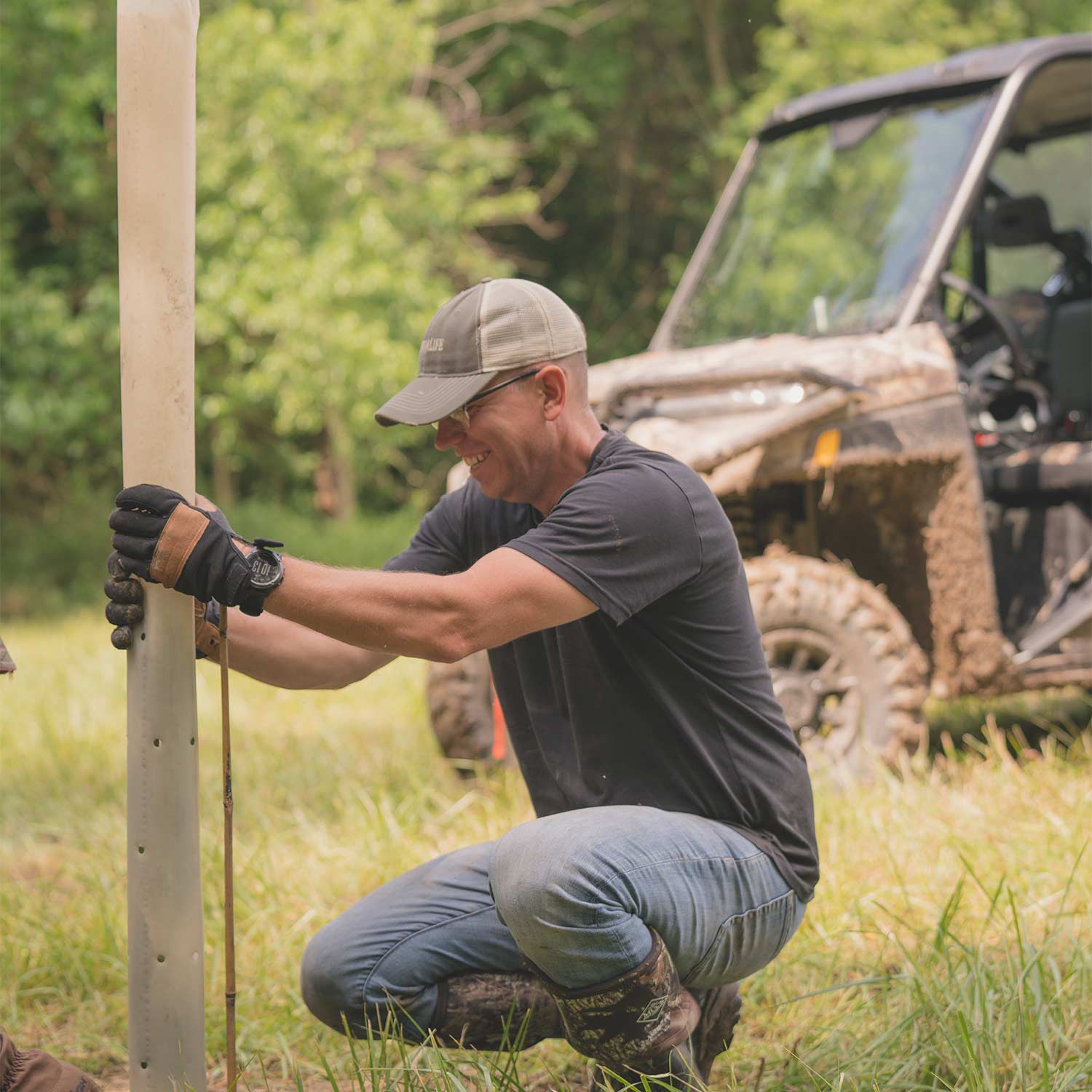
3. Apple
Just because I prefer pears over apples doesn’t mean this classic isn’t a heavy-hitter. It’s not exactly a secret that deer love apples, and while there are certainly a variety of fruit trees that you can use, there’s something special about an apple grove in the deer woods. As a part-time realtor, I can tell you that apple trees are definitely a positive selling point on any hunting property.
Again, choose a variety that best fits your growing zone and desired outcome. If you’re planting solely for wildlife attraction, there are a number of hybrids engineered specifically to produce fruit quickly. These apples don’t possess the same flavor and sweetness as the varieties you buy at the supermarket, so just make sure you understand the differences before you plant.
4. Persimmons
Persimmons, while tasty and a staple for deer hunters in the South, aren’t a universal option across the whitetail world. They can be found in 30 states, including the Midwest, and as far north as Pennsylvania and Maryland, but here in Michigan, for example, persimmon trees are a tough sell. You can grow them, but you’ll need to make sure you’ve chosen a proper hybrid (like Chestnut Hill’s Deer Candy).
One of the best things about persimmon, aside from the fact that deer love them, is that they produce fruit quickly. You should expect a crop 2-3 years after planting. But don’t fertilize them in an effort to enhance the yield—this can cause the trees to drop fruit prematurely.
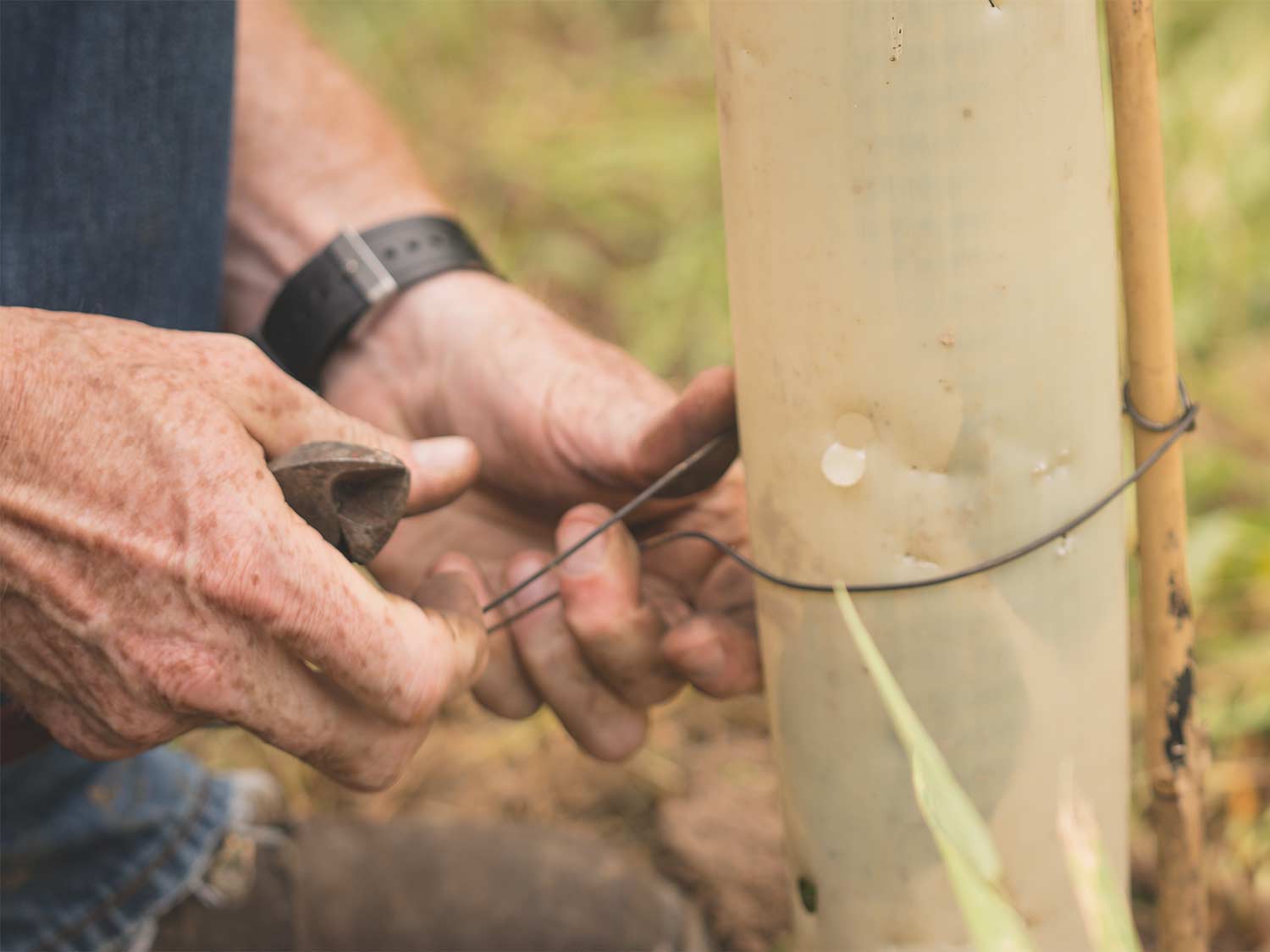
5. Oaks
If you’re in this for the long haul, oaks should be on your planting list. Just be prepared to have some patience, because it’ll be a while before your efforts pay off.
While there are highly specialized hybrid oak varieties that will produce acorns in just a few years (most of these will be variants of a white swamp oak), acorn production for most oak species will take at least five years or more. But that’s okay, because they’re worth the wait. Acorns are, without question, the most important tree-grown forage in the woods. No hunting property can be considered complete without them.
White oaks are typically regarded as a favorite of deer, though I’ve never seen a deer walk past the acorns of red oaks. The sawtooth oak deserves a look as a top option for wildlife production, too.
6. High Bush Cranberry
Technically, this isn’t a tree. It’s a shrub. But it still deserves a spot in this list because it’s a do-it-all plant that doubly benefits wildlife because it provides both a great food source and top-notch cover.
I’ve planted cranberry shrubs in all types of soils, ranging from sun-drenched sandy hills to heavy clay. They’ve thrived wherever I’ve planted them. It takes just a few years for them to get bushy, tall, and thick. You’ll have gobs of berries that deer, turkeys, and birds relish. And, when planted in clusters, they create awesome bedding cover.
